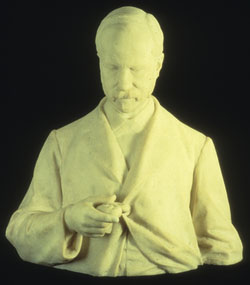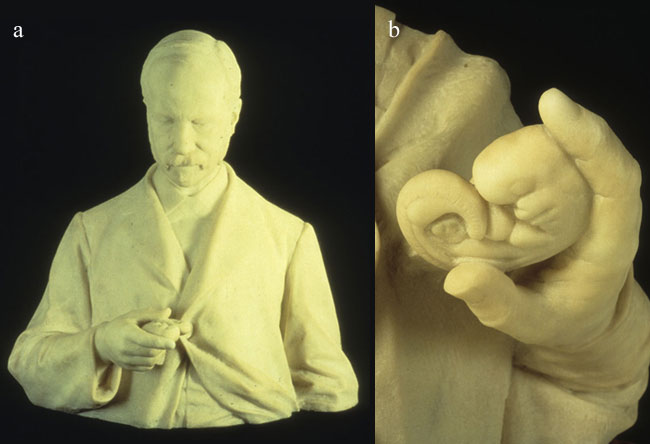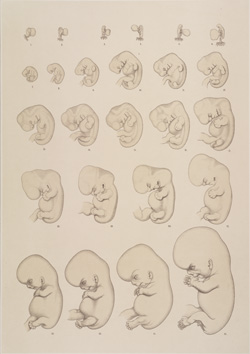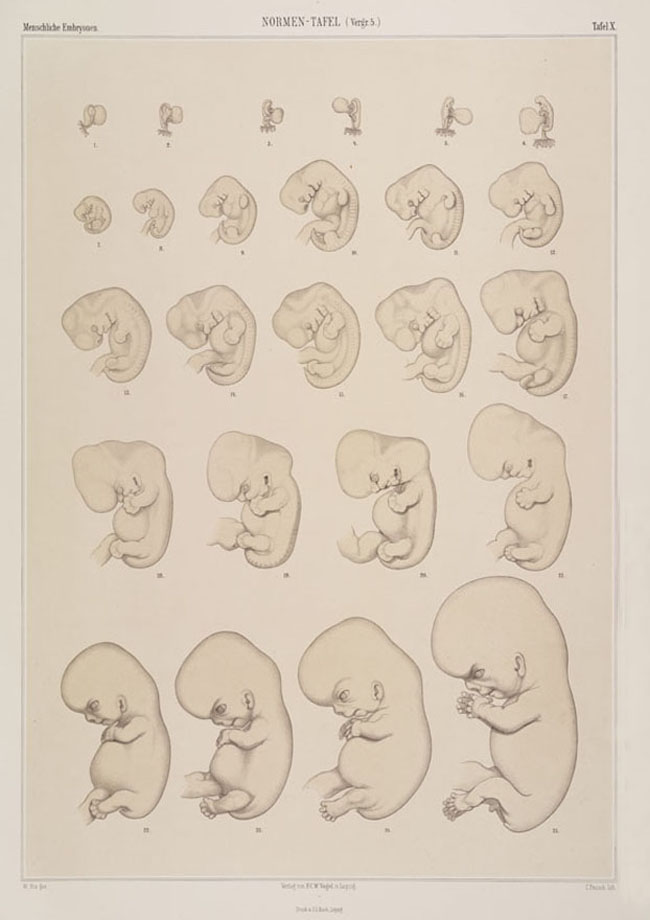Embryologist and embryo in marble.
The Leipzig sculptor Carl Seffner made this intimate bust of Wilhelm
His in 1900, probably on a private commission. Modelling was so central
to the new human embryology that it shows the anatomist contemplating
a model embryo he is holding in his right hand. Taking both model and
anatomist into marble may have created the illusion that he is holding
the embryo itself—for viewers who recognized the shape but did not know
that the original was only 4 mm long.
Human embryology was transformed in the decades around 1900.
Surrogates would no longer do now that Ernst Haeckel had put the similarity and difference of vertebrate embryos so controversially on the agenda. Haeckel’s leading opponent, Wilhelm His, led anatomists in insisting that human embryology should be about human embryos. In a monumental study published through the 1880s he exploited new techniques to reform a field that had previously been open to any medical man who happened to obtain a rare specimen.
Difficult sectioning and modelling techniques gave superior access to internal structure and restricted the research to anatomical experts. The reform was embodied in a standard developmental series, or normal plate, which provided a framework for a mass of further research. Competing to find the earliest specimen, anatomists described human embryos more thoroughly than those of any other mammal. This made a human embryology that could approach comparative questions from a position of strength.





